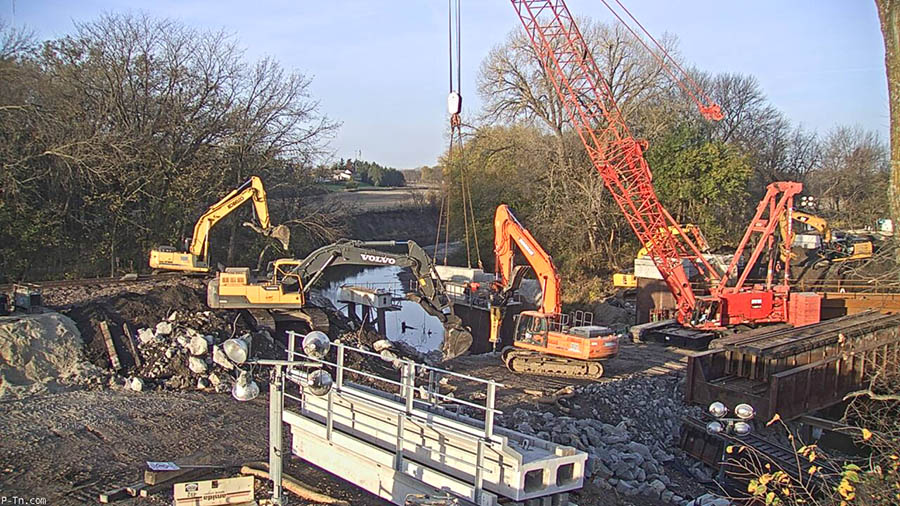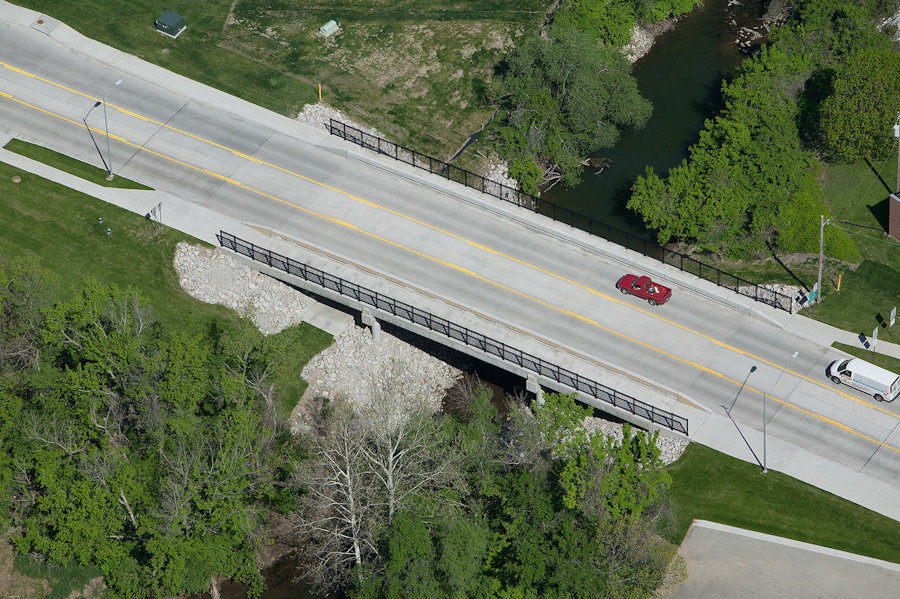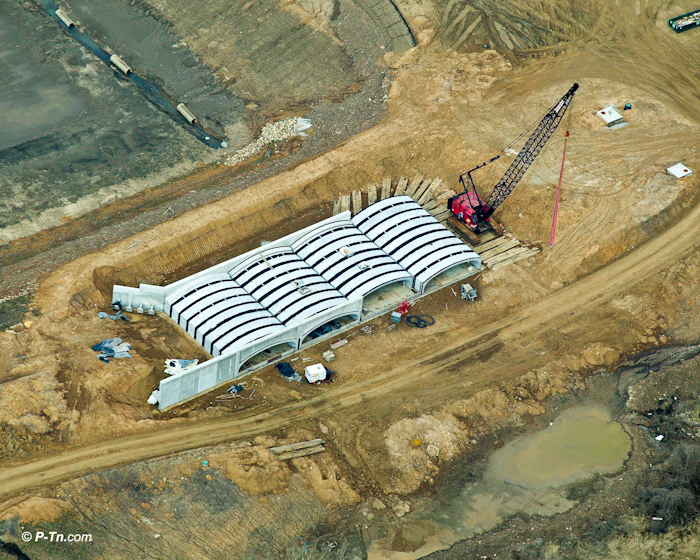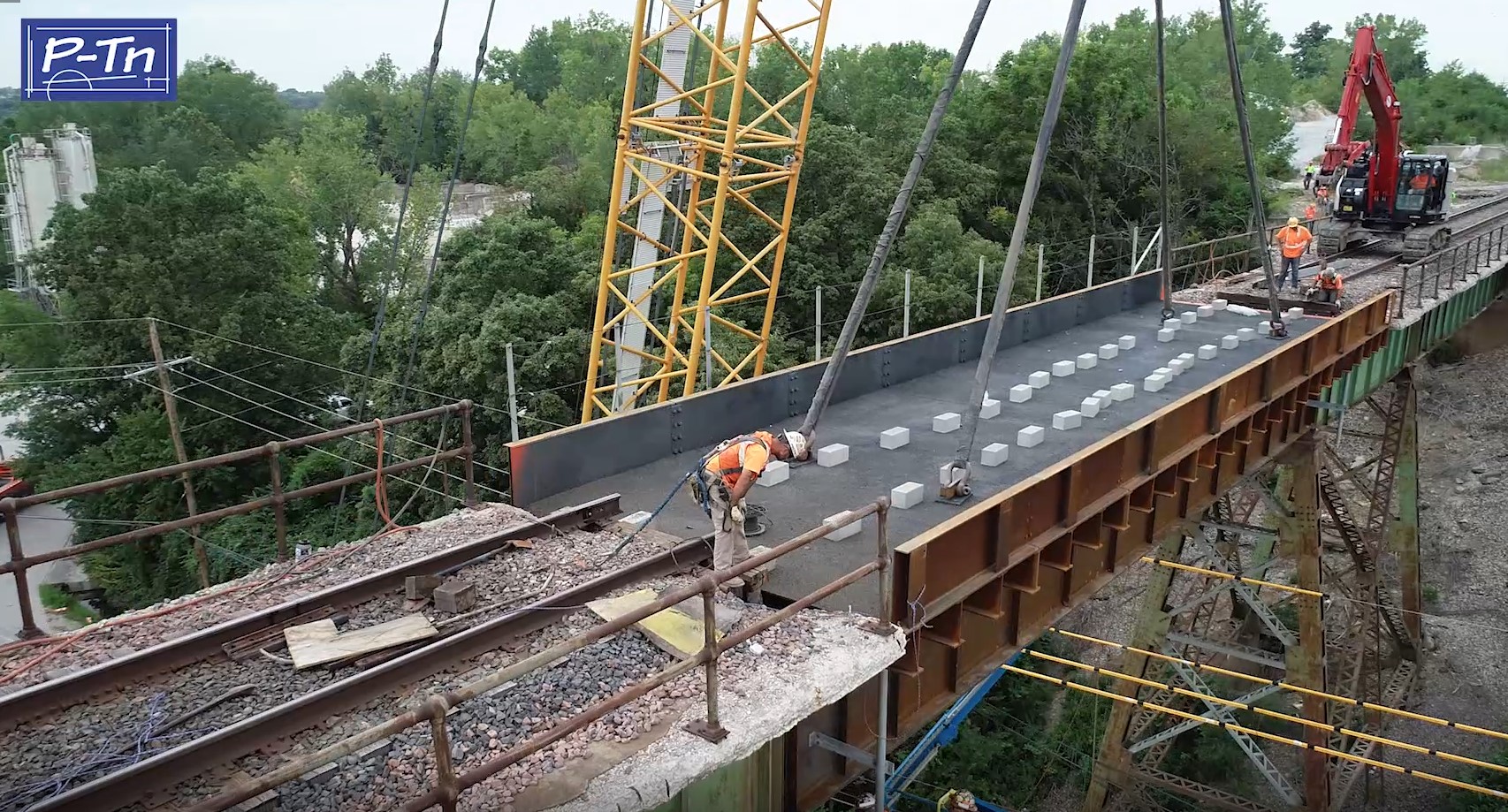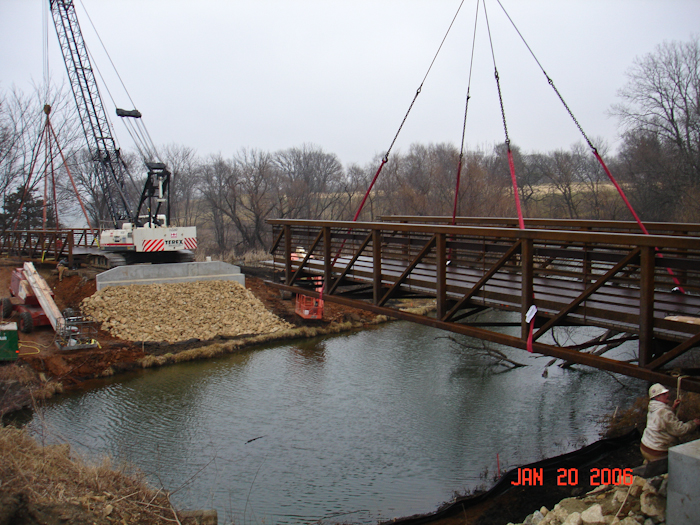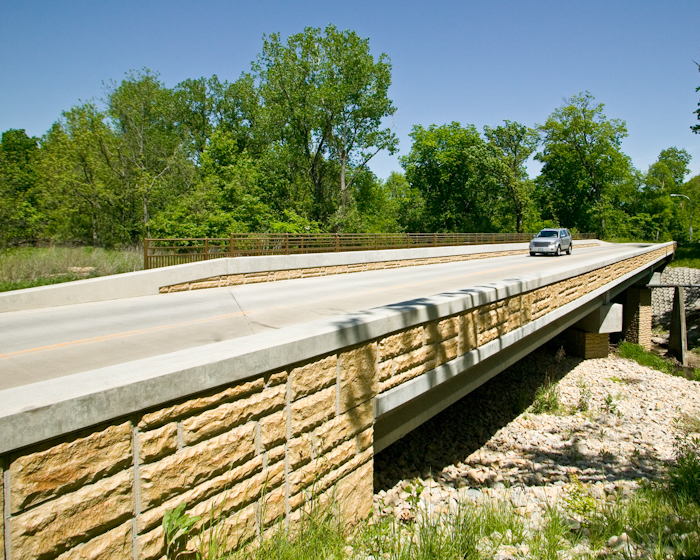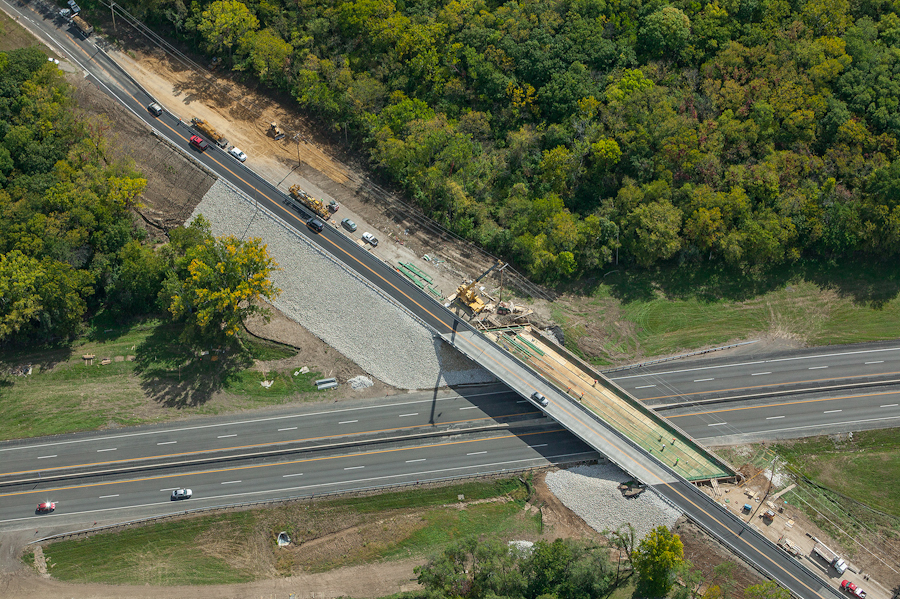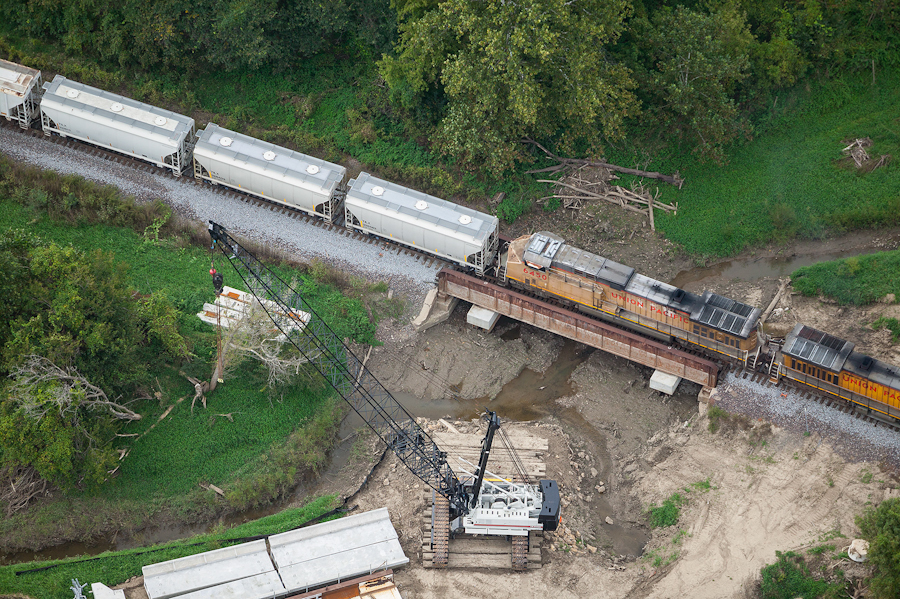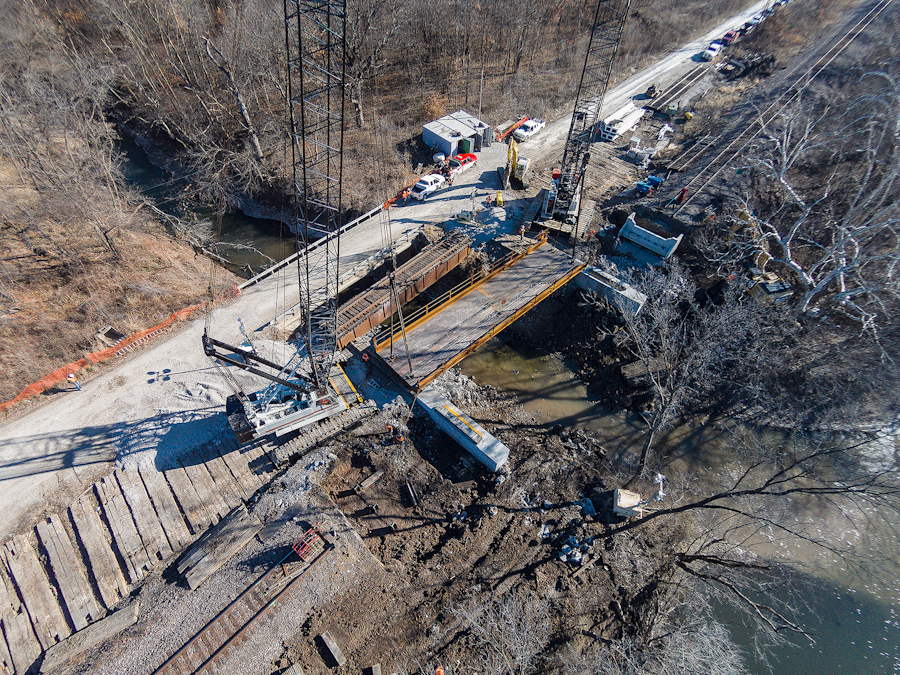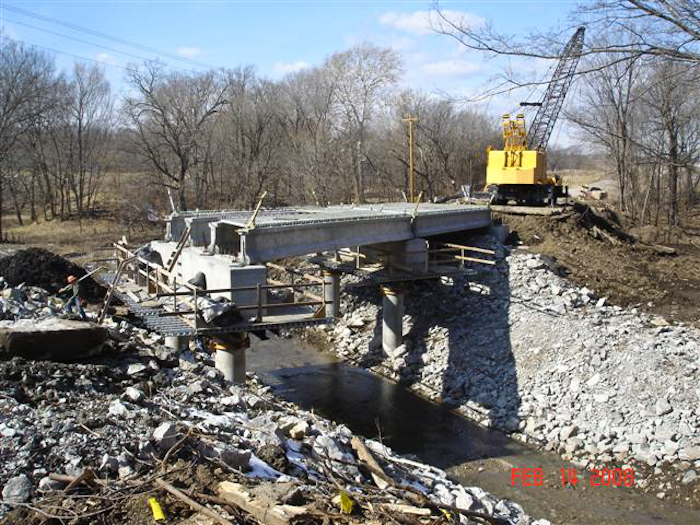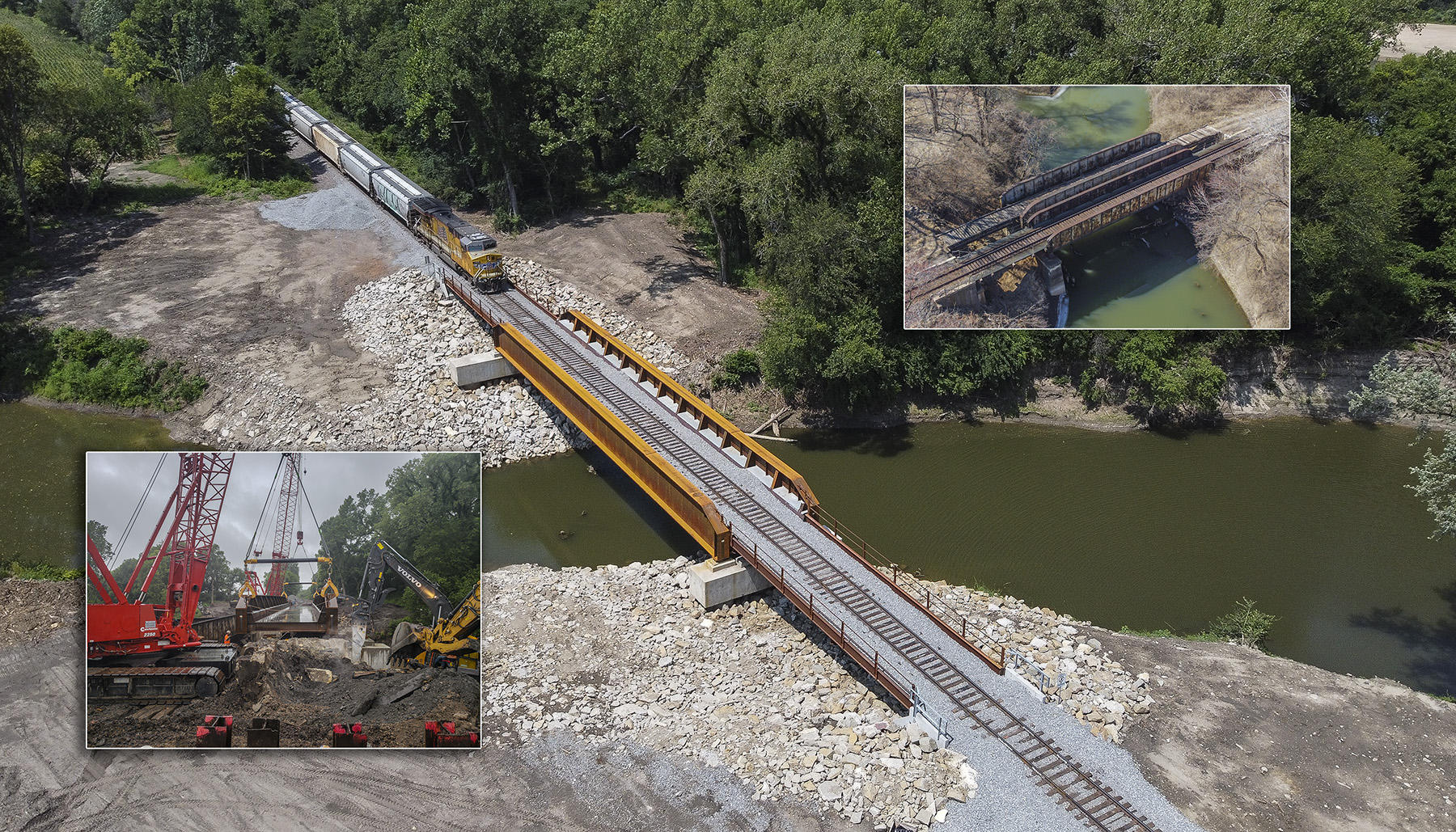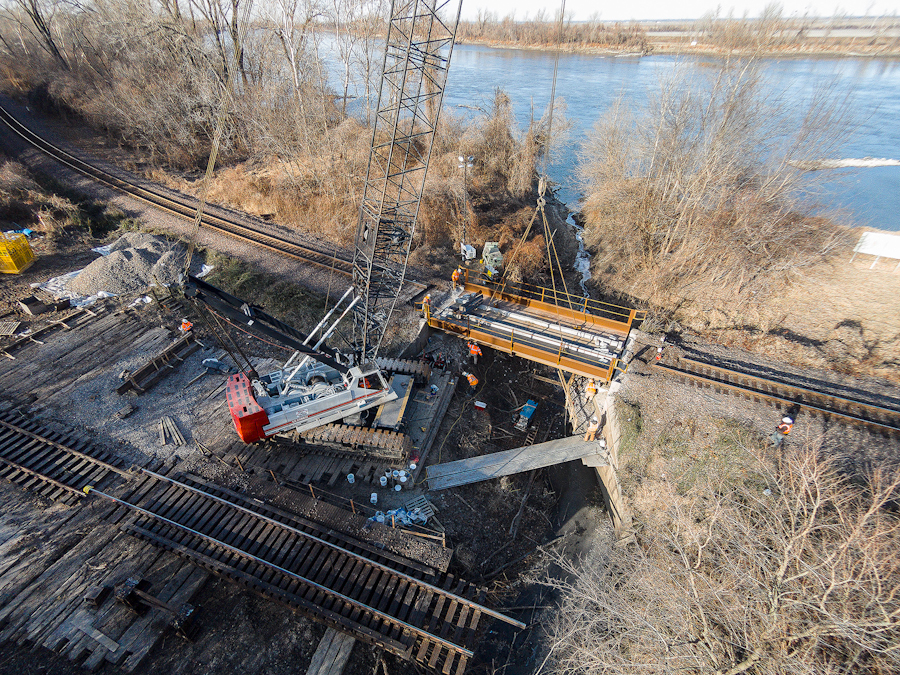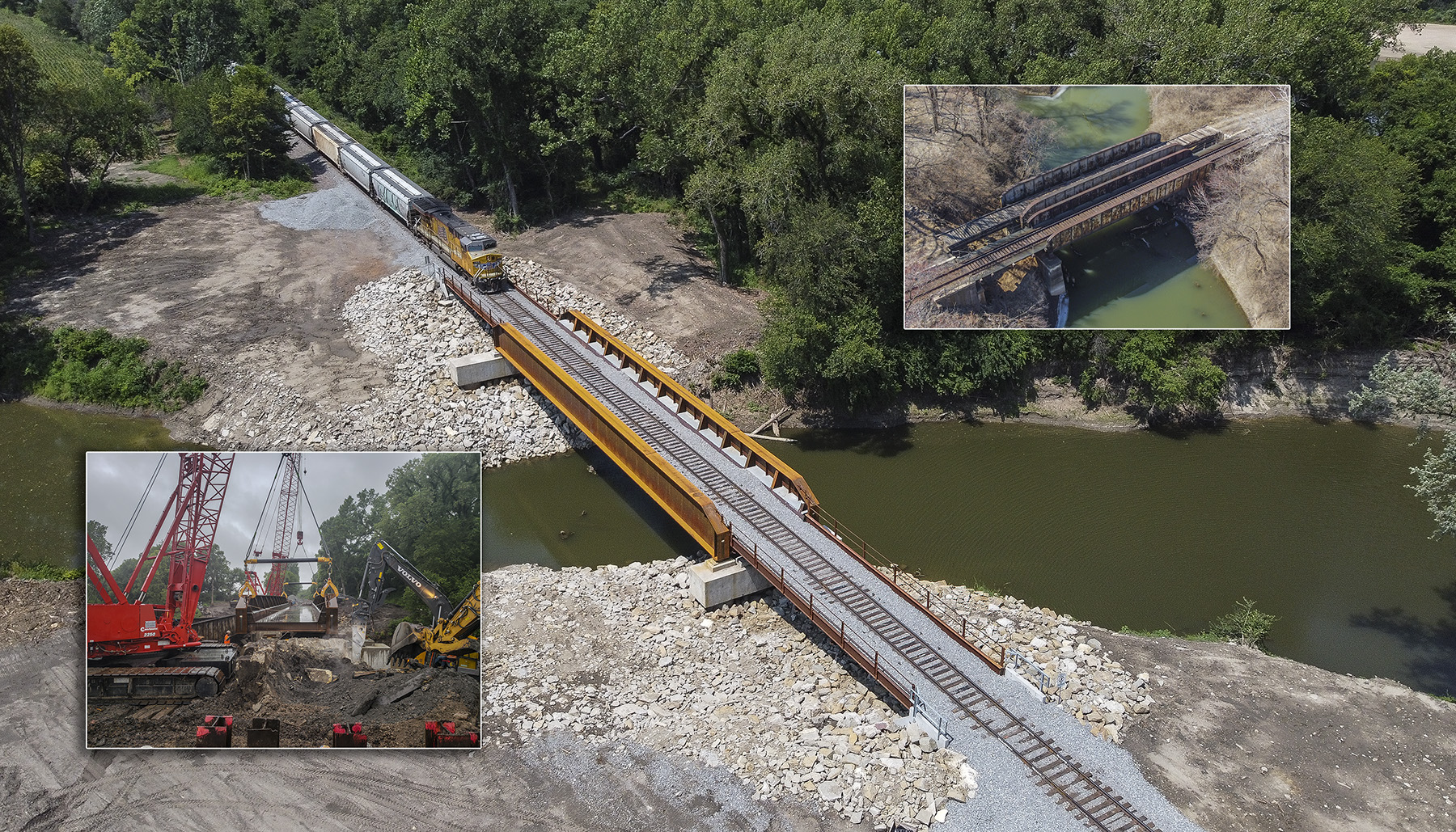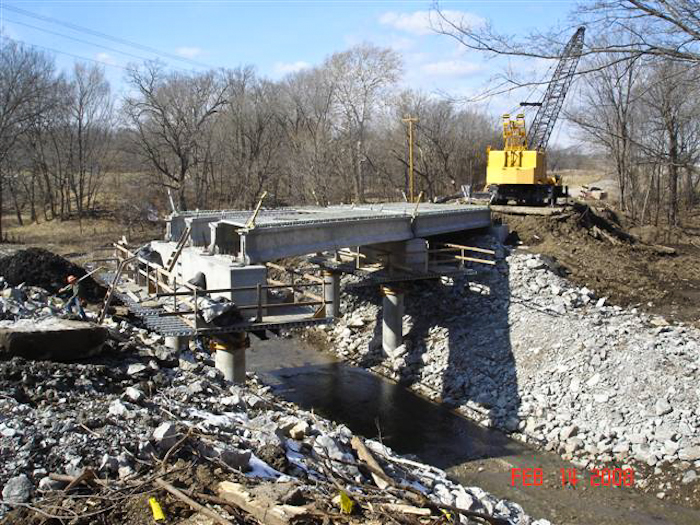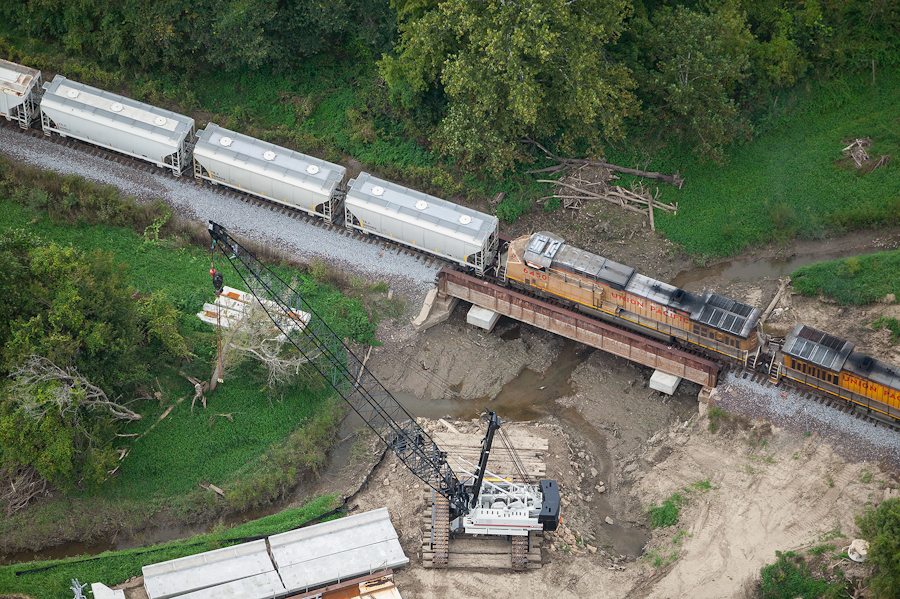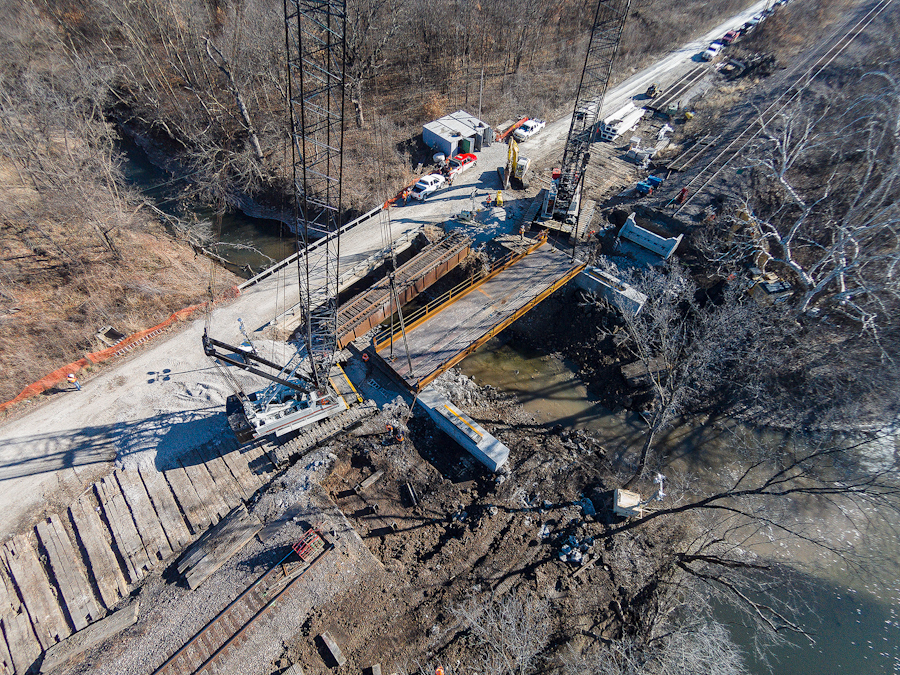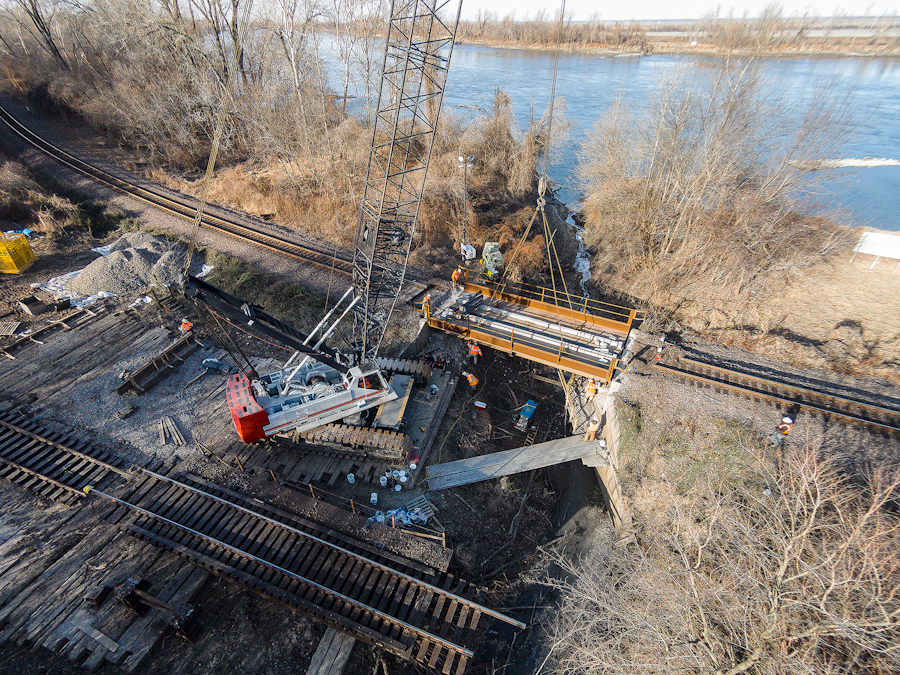UPRR Bridge over Muddy CREEK
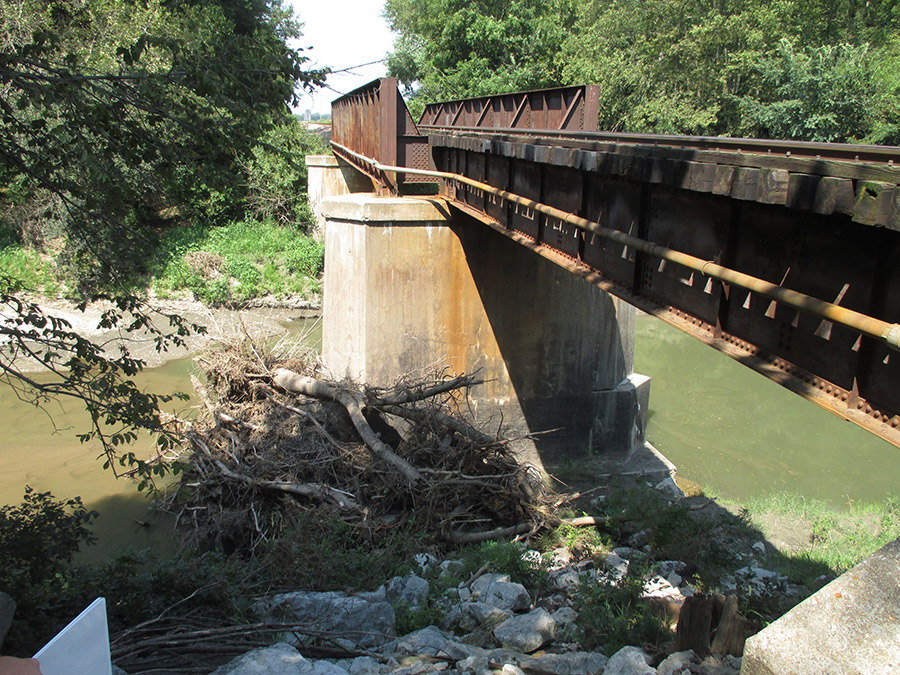
Existing Bridge/Reason For Replacement
Barcus has performed work for Union Pacific Railroad, Kansas City Southern Railroad, Burlington Northern Santa Fe Railroad, Kansas City Terminal Railroad, and Cimarron Valley Railroad companies over the last 30 years. Our staff is well versed in the current railroad regulations and training. Barcus has the ability to perform a variety of tasks that include shoring projects adjacent to railroad lines; bridge tie replacements; and bridge repairs and replacements. Just to name a few. In order to minimize the interruption of railroad traffic, Barcus has completed several bridge replacements in 24 hours or less. Our contracts have ranged from $50,000 to several million dollars.
CONTACT US at L.G. BARCUS & SONS
1-800-255-0180
API Birds/Bats and Aquatic life
The area is known to have threatened and endangered birds and bats. An environmental surveyor was employed by Union Pacific Railroad to inspect the trees for threatened or endangered wildlife. Within Barcus’ work zone, the surveyor located one tree harboring nests of northern long-eared bats, a threatened species in Nebraska. Using construction materials, Barcus visibly marked- off the tree and took precautions to not disturb the bat nests throughout the course of the project.
The scope of work entailed building the new railroad bridge within the creek path due to the size of Muddy Creek. With the Muddy Creek feeding into the Big Nemaha River, disturbing aquatic life while constructing the substructure and setting structural steel was a concern. Barcus designed a creek crossing with eight 6’ diameter pipes that allowed the aquatic life to flow freely through. Barcus installed clean rock on top of the pipe to allow equipment access.
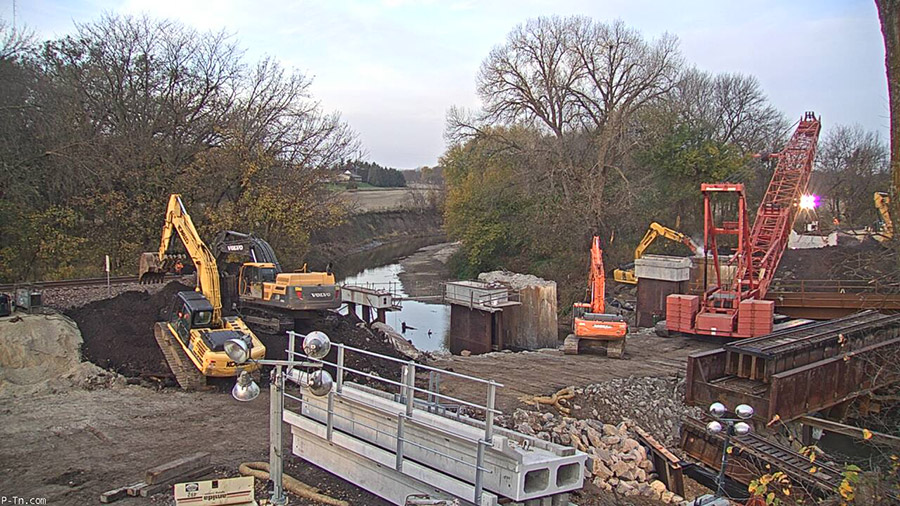
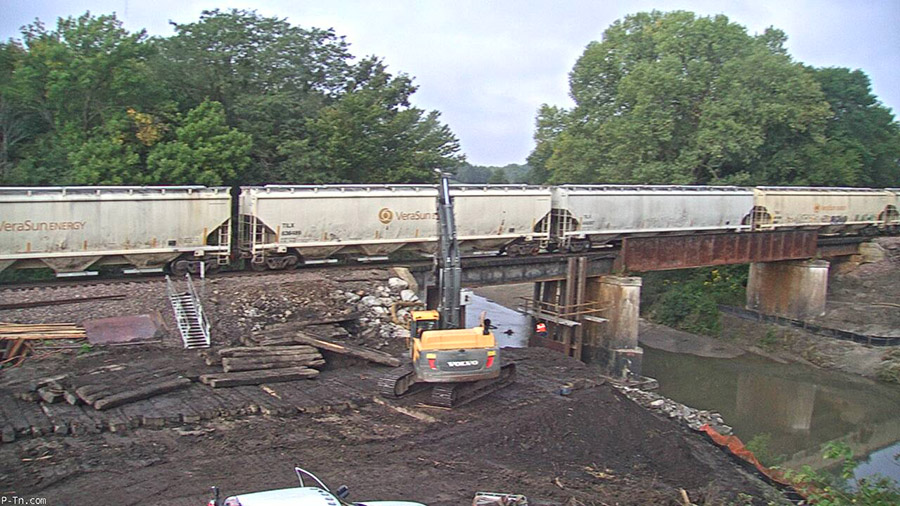
Working around an active train track
The most challenging element of replacing a railroad bridge is completing the scope of work while trains are still activity running the line. Between trains, Barcus worked short durations or “windows” to build the substructure. We drove 27 H-pile through or immediately adjacent to the existing structure. Once the piles were driven, Barcus welded cross bracing and metal skirting to the river piers. The skirting had a conical nose on the upstream side to divert debris downstream. Again, this scope of work was completed during “windows”.
The most challenging element of replacing a railroad bridge is completing the scope of work while trains are still activity running the line. Between trains, Barcus worked short durations or “windows” to build the substructure. We drove 27 H-pile through or immediately adjacent to the existing structure. Once the piles were driven, Barcus welded cross bracing and metal skirting to the river piers. The skirting had a conical nose on the upstream side to divert debris downstream. Again, this scope of work was completed during “windows”.
Change Out Day
Union Pacific Railroad allotted the track to be shut down to train traffic for 24 hours. This is known as a “Change Out”. During this period, Barcus removed the existing bridge, dug out the abutments, set and weld the abutments, set the river pier caps, set 10 precast girders and 1 steel girder span, set the rail, and placed ballast across the new railroad bridge. Barcus “changed out” the bridge in 16 hours with the track portion being completed 4 hours after.
Safety and Communication
While working on a job of this scale with this amount of equipment trains and personnel in a tight work site, communication is very important for safety. Barcus’ crews are very experienced in working around live train tracks as well as completing a bridge in a single day. Barcus has radios in every piece of equipment and on every crew foreman to help keep people safe.
